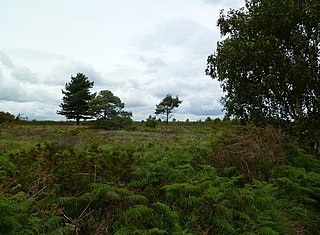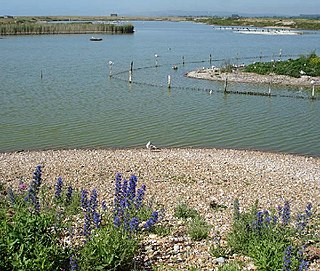
Heswall is a town on the Wirral, in the county of Merseyside, England. Administratively, it is a ward of the Metropolitan Borough of Wirral. At the time of the 2001 Census, the total population of the ward was 16,012, which included the nearby villages of Barnston and Gayton. The population of the town of Heswall itself was 7,750. By the time of the census 2011 population details for Heswall town were no longer maintained. However the ward's population had decreased to 13,401.

The Wildlife Trust for Bedfordshire, Cambridgeshire and Northamptonshire (WTBCN) is a registered charity which manages 126 nature reserves covering 3,945 hectares. It has over 35,000 members, and 95% of people in Bedfordshire, Cambridgeshire and Northamptonshire live within five miles of a reserve. In the year to 31 March 2016 it employed 105 people and had an income of £5.1 million. It aims to conserve wildlife, inspire people to take action for wildlife, offer advice and share knowledge. The WTBCN is one of 36 wildlife trusts covering England, and 47 covering the whole of the United Kingdom.

Thurstaston Common is an area of almost 250 acres (100 ha) of parklands, wood and heath between Frankby and Thurstaston, on the Wirral Peninsula in North West England. The common is jointly owned by The National Trust and the Metropolitan Borough of Wirral. Royden Country Park is nearby and offers additional facilities.

Brotherton Park and Dibbinsdale Local Nature Reserve informally known as Dibbinsdale is a combined park and local nature reserve managed by the Metropolitan Borough of Wirral and located in Bromborough, Merseyside, England.

Thurstaston is a village on the Wirral Peninsula, England. It is part of the West Kirby & Thurstaston Ward of the Metropolitan Borough of Wirral. The village lies on the A540 road between Heswall and Caldy, although it extends some distance down Station Road to the bank of the Dee estuary where there is a large caravan park.

Corfe & Barrow Hills is a 102.8 hectare biological Site of Special Scientific Interest in Dorset, notified in 1986. One part of it is a Local Nature Reserve also called Corfe & Barrow Hills, while another part is Corfe Hills Local Nature Reserve.

Rye Harbour Site of Special Scientific Interest is a nature reserve located on the western side of the mouth of the River Rother at Rye Harbour, about 1 mile downstream from Rye East Sussex. It forms part of a wide network of SSSI's on the Kent-Sussex border that include the Romney & Walland Marsh, the Dungeness Peninsular, the lower Rother Valley and the Pett Levels.

Cleaver Heath Nature Reserve is a nature reserve in Heswall, on the Wirral Peninsula, managed by the Cheshire Wildlife Trust. It forms part of the Heswall Dales Site of Special Scientific Interest (SSSI).

Little Paxton Pits is a 127.4 hectare biological Site of Special Scientific Interest in Little Paxton in Cambridgeshire. Part of it is also a 60 hectare Local Nature Reserve (LNR).










